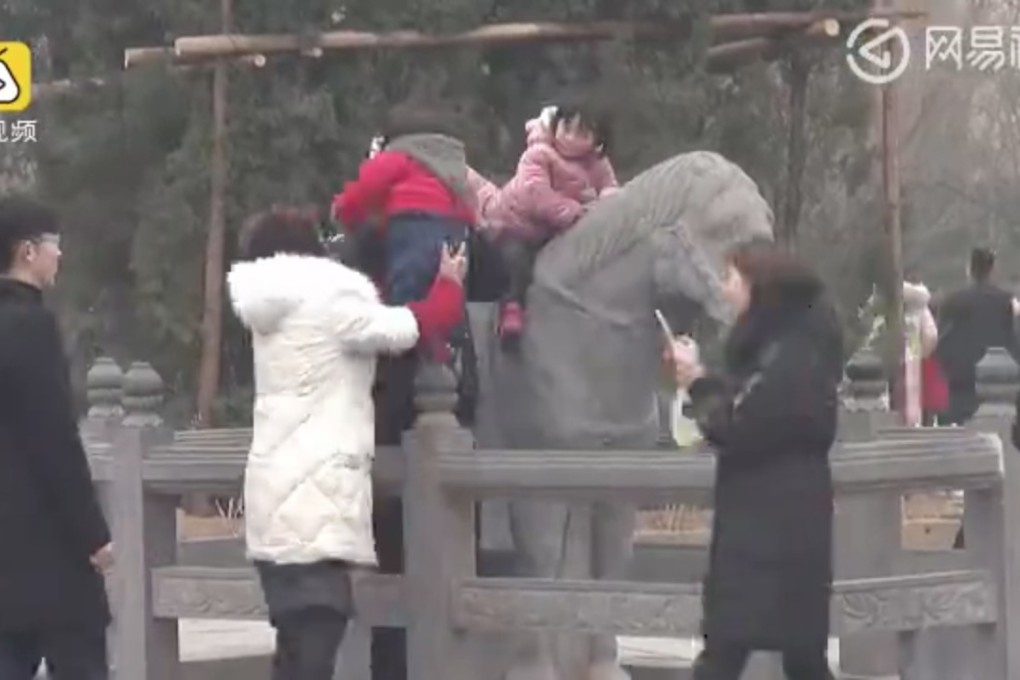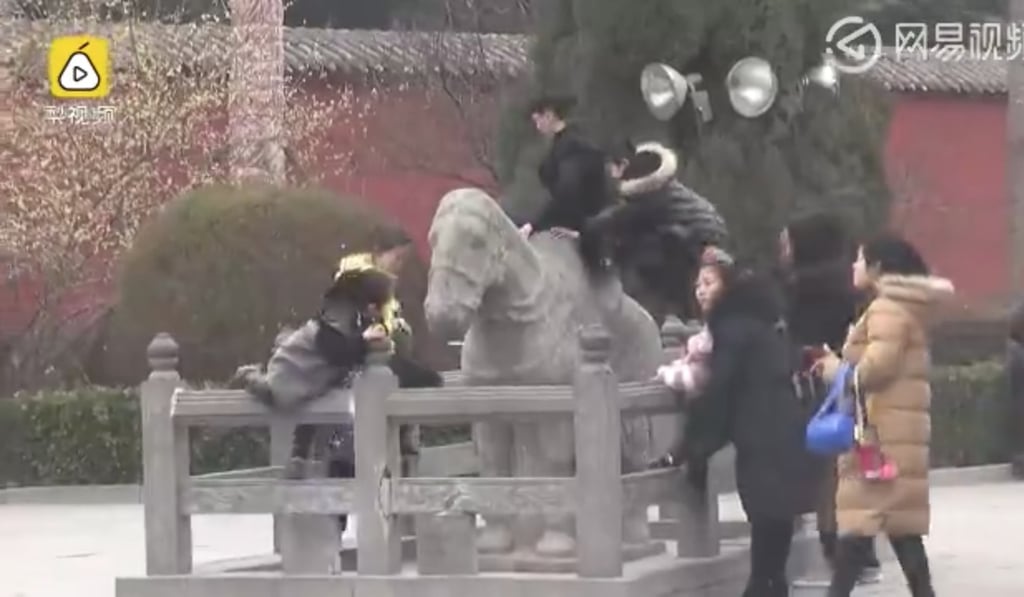Chinese tourists ignore warnings, clamber over ancient horse statues
Visitors filmed taking photographs and climbing on the historical relics dating back to the Song dynasty about 1,000 years ago

Tourists have ignored warnings and scrambled on top of two stone statues of horses dating back about 1,000 years at a temple in northern China during the Lunar New Year holiday.
Video footage shows children and adults climbing on top of the statues outside the White Horse Temple in Luoyang in Henan province, the streaming site Pear Video reported. The site is one of the oldest Buddhist temples in China.

Both statues are fenced off with stone railings, but that failed to deter tourists from approaching. In fact, the railings are used by many as a handy step to climb onto the tall statues.
The video footage shows up to four children riding a stone horse at one time, helped by their parents.
A vendor on the square said tourists had repeatedly been told not to climb the statues, but they could not be stopped because there were just too many people. Many Chinese people visit temples during the Lunar New Year holiday to burn incense and pray for good fortune to mark the beginning of the new year.